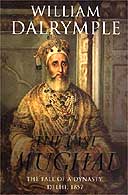Metros have this strange power over me. I grew up in a very suburban settin

g, in a city with very limited public transportation. My first metro experience was with the world’s best and largest - the London Underground when I was fifteen. The multitude of lines going in every which direction called out to me like a giant bowl of spaghetti encouraging me to take in each of its many lines. I can remember heading all the way out to Wimbledon for no other reason than the fact that the place name was familiar and that it was situated at the end of a line. During that ten-day trip I probably spent more time beneath London than above.
Since then I have been on many high-speed rail systems - I have used them as a commuter, a student, and in many cases again as an avid tourist. I have fallen asleep on the DC Metro and ended up in Shady Grove just as the entire system shut down, witnessed two assault and batteries on the New York Subway, been absolutely crushed on many occasions on the St. Petersburg Metro, and been chastised simply for being an American on the Paris Metro.
Indeed each system has its quirks. Some are only one stairway below the street - like New York’s, other’s like Washington’s and St. Petersburg’s require you to descend leagues beneath the Earth’s surface. Some, like the socialist realist Moscow Metro, are very ornate with beautiful ceramic tiles and even chandeliers, while others like my home city’s BART are relatively drab looking dark cylinders.
In each instance, however, these systems have become channels of a city’s lifeblood - they have channeled urbanization and daily city life in ways that no bus or streetcar line could ever do. As time moves on they come to represent a time of growth and hopefulness for the large cities and expanding national economies that they serve. After all London built its system in the mid 19th Century, when few would challenge the fact that the city’s economic prominence was quickly reaching its apex globally. By the turn of the century as several train companies simultaneously built the lines that now make up New York City’s MTA Subway, it was clear that there was a new kid on the block challenging London as the economic center of the world. Stalin’s development of the opulent Moscow Metro as the common man’s palace in the 1920s and 1930s was clearly an attempt to showcase a challenge to the capitalist world order.
So it is with this historical perspective that I took my first look at the brand new Delhi Metro. On the flight to Delhi, I watched a Discovery Channel program about the system. There are currently only three lines, but considering that construction started only a few years ago, I count that as quite an accomplishment. Once the system is completed, it will be the second-largest on Earth. The London Underground will remain the largest.
Perhaps, it is the extreme congestion and chaos of street-level Delhi that makes the system all the more special and inviting. From the muggy heat and bleaching sun that typifies a summer afternoon in the Indian capital, one is suddenly transported to an air conditioned, well-lit, and spacious underground oasis.
I entered at the Rajiv Chowk (Connaught Place) Station and went two stops to Central Secretariat Station. The cars are structured similar to the NY Subway cars, but with absolutely no seats facing forwards or backwards. All passengers face each other with many bars and hanging handles ensure that there is adequate space for all standing passengers to ride comfortably. The short ride south between the city’s commercial center and its political heart was perhaps the most comfortable.
Most people get on at our stop since Connought Place is the city’s largest business district. Still, when you compare it to getting on a train at 34th and Broadway or even DC’s Metro Center Station, the passenger numbers aren’t quite there yet. This is a challenge for all new public transportation systems. When does a new way of getting from Point A to Point B become the norm? When will the novelty die out? Then I realized the passengers aren’t there because the city the planners want is right now in a constant state of flux, and it is the planners who want a hand in charting that development, not the other way around.
As I stood looking at a massive map detailing the location of all the future lines and stations, I thought about all of the real estate speculators are buying every centimeter of land within 2 square kilometers of these existing and planned stations. Unlike in developed countries, where planners must hold meetings to determine environmental, traffic, and cost of living ramifications for any tiny change to their daily grind, planners in developing countries are the protagonists, they are the actors. Their business is not merely reaction to the world the way it is, they are able to chart a new course and form a wholly new city. This is what happened in the London of the 1890s, the New York of the 1910s, and it is happening in Delhi today. Riding this beautiful new system was a way to get a premature glimpse of the new capital city that is to come.
 sat watching the Indian presses reaction to the blast, I was reminded of some passages that I had just read inIndian historian William Dalrymple's The Last Mughal.
sat watching the Indian presses reaction to the blast, I was reminded of some passages that I had just read inIndian historian William Dalrymple's The Last Mughal.